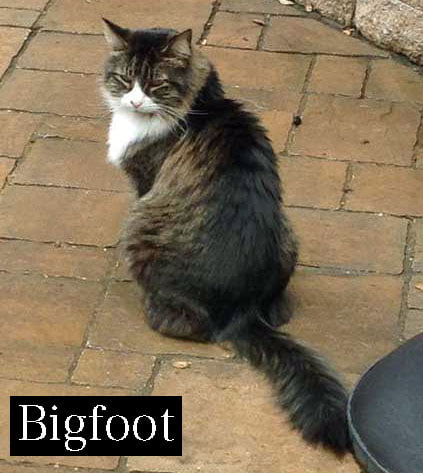
In 2012, American cats had an average lifespan of 12 years. Ten years earlier it was 11 years. This is about a 10 percent increase. Incidentally, the increase in the lifespan of dogs over the same period is less than half that at 0.4 percent. (note: is an average lifespan of 12 years slightly short and if so, why?)
Large dogs live shorter lives than small dogs. The smallest dogs live 41 percent longer than the largest. Most domestic cats are about the same size but, that said, the largest domestic cat can be about 3-4 times larger than the smallest (large Maine Coon – 25 lbs – versus Singapura at 6 pounds or a small random bred cat – see range of sizes for the breeds). I don’t know if the trend for dogs applies to cats.
In the USA, it is interesting to note that where cats live affects how long they live.
This appears to be due to the impact of certain preventable diseases that are more prevalent in certain areas. An example is the increased prevalence of heartworm disease in pets.
In the USA, cats live the shortest lives in Louisiana and Mississippi. That is something worth remembering.
Apparently – and this is a surprising statistic – neutered males lives 62% longer lives than whole males. That means 16 years (neutered) compared to 10 years (un-neutered) as a comparison. For spayed females the difference is less stark. Spayed females live 39% longer. The experts have always said that neutering removes certain health problems. Perhaps also the biggest factor in gaining an extended life when neutered is that, from the human perspective, a cat’s behaviour improves: less roaming, less fights, less urine marking (spraying) etc..So called “bad cat behavior” is a major reason for relinquishing cats which can lead to euthanasia.
As male outdoor/indoor cats roam a lot more if un-neutered they have a 400% greater risk of being injured or killed by road traffic (4x the risk). As they get into fights far more frequently they are 300% more likely to be bitten by another cat.
These are strong statistics that support spaying and neutering of domestic cats just for health reasons. The other important benefit is that there is a reduction in the creation of unwanted cats.
It is likely also that veterinary care has improved and I hope cat caretaking has also improved specifically with taking proactive steps to prevent disease through checkups and vaccinations. Although cats should not be over-vaccinated.
Source: Banfield stateofpethealth.com

I’m all for cats living longer as long as they have quality of life.
But it must be a miserable life for declawed cats, strictly indoors always, nothing to do, probably with painful arthritis.
There are never any statistics on those cats living out their life sentence for no crime, just as there are none for the number of declawed cats relinquished and killed at any age.
Agreed, also with a longer life comes a downside: more possibility of geriatric cat illnesses and more vet bills that some cat caretakers understandably find hard to pay.
Ahh…Bigfoot. Thanks for making him the poster-cat for cats living to a ripe old age. I’m aging by the minute making sure to do right by him.
Those are interesting stats. I wonder how long an intact male can produce offspring? Their whole life?
This is off subject. My friends cat, Amber, calico spayed female, was attacked by a feral, and apparently mounted. When she protested, he bit her on the back in four places. They didn’t know at first that she had holes in her. The bites became infected and required surgery, with drains put in. She had to wear an Elizabethan collar for over a week.
I had never heard of that happening before.
Wow, that is interesting DW. I have never heard that happening before. I wonder if the feral attacked her or was just trying hard to keep her in a submissive position. You know that male cats bite the female at the back of the neck to keep her in position and to shut her up, to stop her complaining (!). Rough business. Well, I wonder if in her protests he just keep on trying and bite her in different places.
Probably so. The bites were all on her back. As if her were trying to pin her down. Maybe someone knows something about this.
Yes it sounds to me too like the feral tom was frustrated at the lack of co-operation from Amber although why he tried to mate her as she couldn’t have been in season because she was spayed, is a mystery.